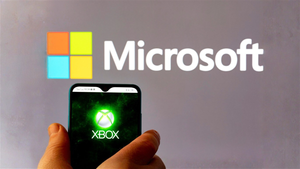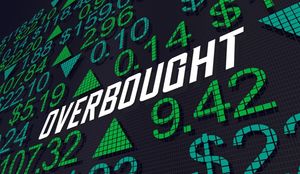
The U.S. financial landscape has witnessed a landmark event with the approval and launch of the Grayscale CoinDesk Crypto 5 ETF (NYSE Arca: GDLC), marking the debut of the nation's first multi-crypto asset exchange-traded product. This groundbreaking ETF offers investors diversified exposure to a basket of five prominent large-cap cryptocurrencies, simplifying access to the volatile yet burgeoning digital asset market. Its introduction is set to reshape investment strategies, attract significant institutional capital, and further integrate cryptocurrencies into traditional finance.
This pivotal development follows a period of intense regulatory scrutiny and innovation, with the Grayscale CoinDesk Crypto 5 ETF officially commencing trading on NYSE Arca on September 19, 2025, after receiving approval from the U.S. Securities and Exchange Commission (SEC) on September 17, 2025. The fund, previously known as the Grayscale Digital Large Cap Fund, now tracks the CoinDesk 5 Index (CD5), providing a regulated and accessible vehicle for exposure to Bitcoin (BTC), Ether (ETH), XRP, Solana (SOL), and Cardano (ADA).
A Regulatory Breakthrough for Diversified Crypto Exposure
The journey to GDLC's approval was paved by the SEC's adoption of new generic listing standards for commodity-based exchange-traded products. This forward-looking regulatory framework is designed to streamline and accelerate the approval process for crypto ETFs on major exchanges, signaling a significant shift in the SEC's approach to digital asset regulation. Grayscale's CEO, Peter Mintzberg, heralded the launch as a "historic milestone for the digital asset industry," emphasizing its role in "ushering in the age of crypto index investing."
GDLC’s portfolio is strategically composed of five of the largest and most liquid cryptocurrencies by market capitalization, covering over 90% of the total cryptocurrency market, excluding stablecoins and memecoins. As of recent reporting, Bitcoin (approximately 72.09%) and Ether (around 17.08%) constitute the largest portions, while XRP (NYSE Arca: XRP), Solana (NYSE Arca: SOL), and Cardano (NYSE Arca: ADA) make up the remainder. This diversification aims to mitigate single-asset risk, offering investors a balanced entry point into the crypto ecosystem. The fund rebalances quarterly to maintain alignment with the leading assets.
The immediate implications are profound. This regulatory precedent is expected to trigger a "massive wave" of new crypto ETPs, with analysts predicting over 100 additional crypto ETFs potentially launching in the coming year. This surge is likely to boost capital inflows into the overall crypto market, particularly for altcoins, as institutional and retail investors gain easier, regulated access. GDLC itself has demonstrated strong early performance, reportedly gaining over 40% year-to-date and outperforming Bitcoin by nearly 11% since June, driven by the strong performance of its altcoin holdings.
Winners and Those Facing New Challenges in the Crypto Arena
The launch of the Grayscale CoinDesk Crypto 5 ETF creates a clear set of beneficiaries while also presenting new challenges for existing players in the financial and crypto sectors.
Grayscale emerges as a definitive winner. The conversion of its Digital Large Cap Fund into a fully regulated ETF solidifies its pioneering status in the regulated crypto investment space. This move is expected to attract substantial institutional inflows, building on Grayscale's past successes, such as the conversion of its Bitcoin fund into an ETF. Grayscale has effectively streamlined access for a broader investor base, strengthening its market position.
The individual cryptocurrency projects included in the GDLC—Bitcoin, Ether, XRP, Solana, and Cardano—are also significant winners. Bitcoin and Ether, as the largest components, will benefit from increased institutional demand and enhanced legitimacy. For XRP, Solana, and Cardano, their inclusion in a regulated, diversified ETF provides crucial validation and institutional exposure, potentially leading to increased investment, improved liquidity, and greater market legitimacy. XRP, in particular, gains fresh recognition following recent legal clarity, while Solana and Cardano have already seen notable price and volume increases post-GDLC approval, reflecting growing institutional interest.
Traditional financial institutions and retail investors also stand to gain. The GDLC launch further integrates digital assets into mainstream finance, providing institutions with a compliant avenue for portfolio diversification. This regulatory clarity lowers barriers to entry for large firms, enabling them to allocate capital to crypto with greater confidence. For retail investors, GDLC offers a simplified and diversified way to invest in a basket of major cryptocurrencies through existing brokerage accounts, circumventing the complexities of direct crypto management.
However, the new competitive landscape presents challenges for other asset managers and crypto exchanges. While major players like BlackRock (NYSE: BLK) and Fidelity (NYSE: FMR LLC) have their own Bitcoin and Ethereum ETFs, Grayscale's first-mover advantage in the multi-asset crypto ETF category will likely prompt them to accelerate their development of similar diversified products to avoid losing market share. BlackRock has seen significant inflows into its single-asset crypto funds, yet the multi-asset approach of GDLC introduces a new competitive dynamic. For crypto exchanges primarily focused on direct retail trading, some retail investors might opt for the simplicity of an ETF like GDLC over direct exchange participation, potentially leading to a slight reduction in direct trading volumes for the underlying assets. However, exchanges that serve as custodians or execution partners for these ETFs, such as Coinbase (NASDAQ: COIN) Custody Trust Company for GDLC, will benefit from increased institutional activity.
Broader Industry Impact and Transformative Implications
The approval and launch of the Grayscale CoinDesk Crypto 5 ETF (GDLC) represent more than just a new investment product; they signify a profound shift in the broader digital asset industry, accelerating its maturation and mainstream integration into traditional finance.
This event solidifies the growing legitimacy of cryptocurrency as a mainstream and investable asset class. By offering diversified exposure to leading digital assets in a regulated framework, GDLC eliminates significant barriers to entry for both institutional and retail investors. This ease of access is expected to attract substantial capital, reinforcing the trend of crypto moving from a niche, speculative asset to a standard component of diversified investment portfolios. The fund's composition, mirroring an index of top cryptocurrencies, further underscores this maturation, balancing risk and reward across multiple blockchain ecosystems.
The ripple effects across the competitive landscape are substantial. GDLC's success is likely to ignite a fierce race among asset managers. Competitors, including established financial giants and specialized crypto firms, will be compelled to innovate rapidly, launching their own multi-asset crypto ETPs or more specialized funds. This heightened competition could lead to innovation in product offerings, such as actively managed crypto ETFs or those focusing on niche sectors like decentralized finance (DeFi), and potentially drive down management fees, ultimately benefiting investors. Traditional brokerages and financial advisors will find it easier to integrate crypto into client portfolios, broadening the reach of digital asset investments.
From a regulatory standpoint, GDLC's approval under the SEC's new generic listing standards is a landmark. This framework streamlines the approval process for spot-based crypto ETPs by allowing exchanges to list products meeting predefined criteria without individual SEC reviews, effectively creating a "fast track" for innovation. SEC Chair Paul Atkins stated that these standards aim to "maximize investor choice and foster innovation" while ensuring robust capital markets for digital assets. This regulatory clarity reduces ambiguity and sets a precedent that could lead to other multi-asset crypto funds and potentially more single-asset altcoin ETFs for qualifying cryptocurrencies.
Historically, the launch of GDLC draws compelling parallels to the introduction of gold ETFs, such as the SPDR Gold Shares (NYSE Arca: GLD) ETF, in the early 2000s. Just as gold ETFs revolutionized access to gold, democratizing ownership and boosting its market legitimacy, crypto ETFs like GDLC are poised to do the same for digital assets. GLD allowed investors to gain exposure to gold prices without the complexities of physical storage, and GDLC similarly provides an accessible, regulated vehicle for investing in multiple cryptocurrencies. The institutionalization and legitimacy conferred by gold ETFs transformed gold's market dynamics; Bitcoin ETFs, approved in January 2024, have already shown a similar effect, with their assets under management (AUM) rapidly catching up to gold ETFs. GDLC further expands this trend, offering diversified exposure that could attract even broader segments of the investment community, marking a new era for accessible, regulated crypto investing.
The Road Ahead: What Comes Next
The debut of Grayscale's CoinDesk Crypto 5 ETF (GDLC) marks not an endpoint but a significant acceleration in the evolution of the crypto market. Both short-term adjustments and long-term transformations are now in motion.
In the short term, expect a surge in institutional capital inflows into the crypto market, driven by the simplified access offered by GDLC and similar forthcoming ETPs. This increased liquidity and demand could provide a fresh impetus for crypto asset prices. The SEC's new generic listing standards are a clear signal, and over 90 active applications are reportedly in the pipeline, suggesting a "massive wave" of new crypto ETP launches. This will likely include more multi-asset funds and potentially single-asset ETFs for qualifying altcoins beyond Bitcoin and Ether. The inclusion of XRP, Solana, and Cardano in GDLC has already provided significant validation for these altcoins, potentially increasing their trading volumes and liquidity.
Looking further ahead, GDLC's launch solidifies the maturation of crypto as an asset class. Index-based crypto ETFs are likely to become a dominant investment vehicle, reshaping how investors gain exposure to digital assets. This enhanced regulatory clarity, coupled with growing institutional adoption, could propel Bitcoin towards ambitious price targets, with some analysts projecting it could reach $250,000 by 2030, further cementing crypto's role as a core, long-term asset.
Strategic pivots and adaptations will be critical for all market participants. Asset managers will need to innovate rapidly, moving beyond single-asset ETFs to offer diversified products that track different indices, incorporate active management, or even offer staking yields. Competitive pressures will likely lead to a reevaluation of fee structures. Crypto projects aspiring for inclusion in future ETFs must prioritize robust technology, strong market capitalization, high liquidity, and impeccable regulatory compliance. They will need to enhance transparency, governance, and security to attract institutional confidence. Traditional financial institutions will increasingly integrate digital assets into their service offerings, moving from cautious observation to active participation. This includes exploring the tokenization of real-world assets (RWAs) and strengthening internal frameworks for risk management, custody, and compliance.
While significant market opportunities abound, including expanded investor access and enhanced portfolio diversification, challenges persist. The crypto market remains inherently volatile, and even diversified funds like GDLC are subject to significant price swings. Regulatory scrutiny, though evolving positively, could still pose hurdles, particularly around specific altcoins or derivatives. GDLC's 2.5% sponsor fee is also higher than many traditional equity ETFs, which investors should consider. Finally, intense competition and potential market fragmentation from a deluge of new ETPs could make it challenging for investors to navigate the landscape effectively.
Conclusion: A New Era for Crypto Investing
The approval and launch of Grayscale's CoinDesk Crypto 5 ETF (NYSE Arca: GDLC) represent a monumental leap forward for the cryptocurrency industry, effectively ushering in an era where diversified, regulated digital asset exposure is readily accessible through traditional financial channels. This landmark event on September 19, 2025, following SEC approval, is not merely the introduction of a new investment product; it is a powerful symbol of the accelerating convergence of crypto and traditional finance.
The key takeaway is clear: the crypto market has achieved a new level of maturity and institutional acceptance. GDLC, as the first multi-asset crypto ETP in the U.S., provides a streamlined pathway for both retail and institutional investors to gain exposure to a basket of leading cryptocurrencies—Bitcoin (BTC), Ether (ETH), XRP, Solana (SOL), and Cardano (ADA)—without the complexities of direct ownership. Its robust early performance, outpacing Bitcoin, underscores the potential for diversified crypto strategies. Coupled with the SEC's new generic listing standards, this development sets a powerful precedent, fostering a more predictable regulatory environment for future crypto innovation.
Moving forward, the market is poised for significant transformation. We can anticipate a surge in new crypto ETP applications and approvals, intensifying competition among asset managers and potentially driving down fees. This increased access and regulatory clarity are expected to attract billions in new capital, further integrating digital assets into mainstream investment portfolios and potentially fueling broader market growth for altcoins. The lasting impact of GDLC’s approval is its role in democratizing access to cryptocurrencies and solidifying their legitimacy as a mainstream asset class, fundamentally reshaping investment horizons in both traditional finance and the digital asset space.
Investors in the coming months should closely monitor GDLC's performance, particularly its ability to sustain outperformance relative to single-asset crypto ETFs and the broader market. The ongoing evolution of the U.S. regulatory framework, especially concerning other altcoins and potential dedicated ETFs for them, will be crucial. Furthermore, vigilance regarding market volatility and the inherent risks associated with smaller tokens within the GDLC basket remains essential. While the 2.5% sponsor fee is higher than many traditional equity ETFs, the diversified exposure it offers, along with the potential for substantial institutional inflows, marks a new chapter for accessible, regulated crypto investing. GDLC is not just an ETF; it is a testament to the ongoing and irreversible integration of digital assets into the global financial system.






